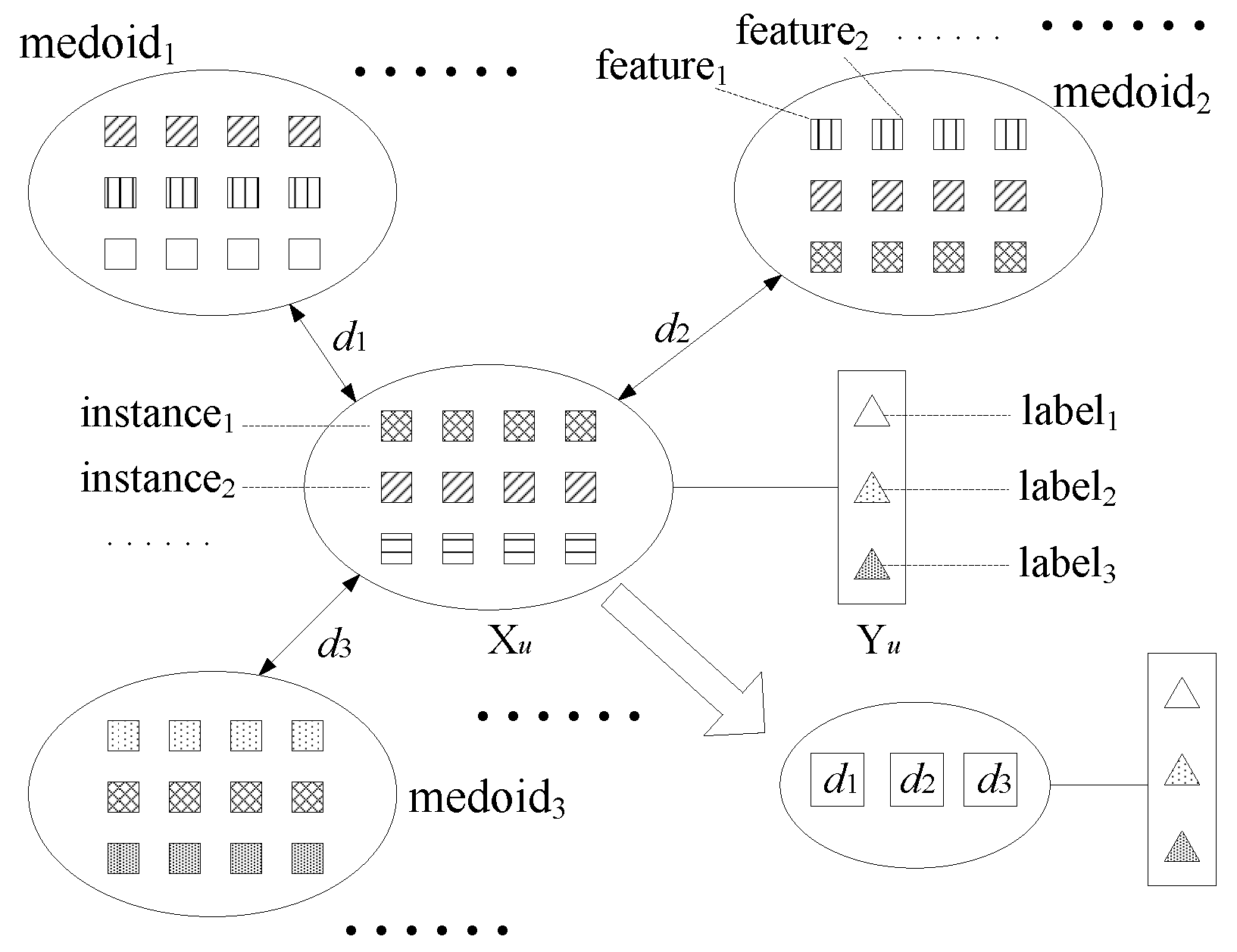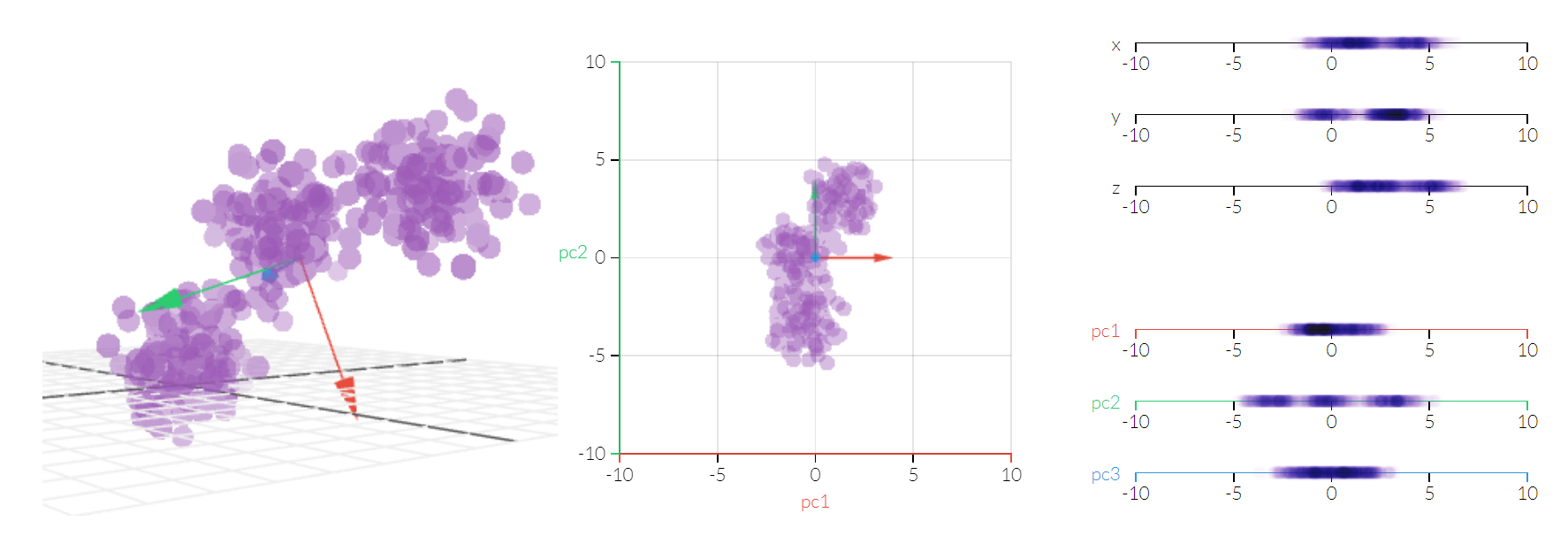45 labels and features in machine learning
machine learning - What is the difference between a feature and a label ... 7 Answers Sorted by: 239 Briefly, feature is input; label is output. This applies to both classification and regression problems. A feature is one column of the data in your input set. For instance, if you're trying to predict the type of pet someone will choose, your input features might include age, home region, family income, etc. What are Features in Machine Learning? - Data Analytics Features - Key to Machine Learning The process of coming up with new representations or features including raw and derived features is called feature engineering. Hand-crafted features can also be called as derived features. The subsequent step is to select the most appropriate features out of these features. This is called feature selection.
Create and explore datasets with labels - Azure Machine Learning ... Azure Machine Learning datasets with labels are referred to as labeled datasets. These specific datasets are TabularDatasets with a dedicated label column and are only created as an output of Azure Machine Learning data labeling projects. Create a data labeling project for image labeling or text labeling.
Labels and features in machine learning
Framing: Key ML Terminology | Machine Learning Crash Course | Google ... Labels A label is the thing we're predicting—the y variable in simple linear regression. The label could be the future price of wheat, the kind of animal shown in a picture, the meaning of an audio... Introduction to Labeled Data: What, Why, and How - Label Your Data Labels would be telling the AI that the photos contain a 'person', a 'tree', a 'car', and so on. The machine learning features and labels are assigned by human experts, and the level of needed expertise may vary. In the example above, you don't need highly specialized personnel to label the photos. What Is Data Labelling and How to Do It Efficiently [2022] - V7 Data labeling refers to the process of adding tags or labels to raw data such as images, videos, text, and audio. These tags form a representation of what class of objects the data belongs to and helps a machine learning model learn to identify that particular class of objects when encountered in data without a tag.
Labels and features in machine learning. What is the difference between classes and labels in machine learning? Answer (1 of 4): Hi, Firstly: There is NO MAJOR DIFFERENCE between classes and labels. Infact they are usually used together as one single word "class label". CLASS: 1. It is the category or set where the data is "labelled" or "tagged" or "classified" to belong to a specific class based on the... Data Noise and Label Noise in Machine Learning - Medium Asymmetric Label Noise All Labels Randomly chosen α% of all labels i are switched to label i + 1, or to 0 for maximum i (see Figure 3). This follows the real-world scenario that labels are randomly corrupted, as also the order of labels in datasets is random [6]. 3 — Own image: asymmetric label noise Asymmetric Label Noise Single Label What Is Data Labeling in Machine Learning? - Label Your Data In machine learning, a label is added by human annotators to explain a piece of data to the computer. This process is known as data annotation and is necessary to show the human understanding of the real world to the machines. Data labeling tools and providers of annotation services are an integral part of a modern AI project. features and labels - Machine Learning There can be one or many features in our data. They are usually represented by 'x'. Labels : Values which are to predicted are called Labels or Target values. These are usually represented by 'y'. Getting to know your Data Before staring to write any code you should know what your aim/result.
Features and labels - Module 4: Building and evaluating ML ... - Coursera It also includes two demos—Vision API and AutoML Vision—as relevant tools that you can easily access yourself or in partnership with a data scientist. You'll also have the opportunity to try out AutoML Vision with the first hands-on lab. Features and labels 6:50 Taught By Google Cloud Training Try the Course for Free Explore our Catalog Labeling images and text documents - Azure Machine Learning Sign in to Azure Machine Learning studio. Select the subscription and the workspace that contains the labeling project. Get this information from your project administrator. Depending on your access level, you may see multiple sections on the left. If so, select Data labeling on the left-hand side to find the project. Understand the labeling task Feature Encoding Techniques - Machine Learning - GeeksforGeeks This method is preferable since it gives good labels. Note: One-hot encoding approach eliminates the order but it causes the number of columns to expand vastly. So for columns with more unique values try using other techniques. Frequency Encoding: We can also encode considering the frequency distribution.This method can be effective at times for nominal features. The Ultimate Guide to Data Labeling for Machine Learning What are the labels in machine learning? Labels are what the human-in-the-loop uses to identify and call out features that are present in the data. It's critical to choose informative, discriminating, and independent features to label if you want to develop high-performing algorithms in pattern recognition, classification, and regression.
Data Labeling | Data Science Machine Learning | Data Label Semi-supervised learning is a class of machine learning that incorporates supervised and unsupervised learning to label large amounts of data with only a small labeled dataset. It uses supervised learning models trained on the small labeled dataset to predict labels for unlabeled data or assign them with what are called proxy labels. Building explainability into the components of machine-learning models ... Features are input variables that are fed to machine-learning models; they are usually drawn from the columns in a dataset. Data scientists typically select and handcraft features for the model, and they mainly focus on ensuring features are developed to improve model accuracy, not on whether a decision-maker can understand them, Veeramachaneni ... How to Label Datasets for Machine Learning - Keymakr In the world of machine learning, data is king. But data in its original form is unusable. That's why more than 80% of each AI project involves the collection, organization, and annotation of data.. The "race to usable data" is a reality for every AI team — and, for many, data labeling is one of the highest hurdles along the way. Data Labelling in Machine Learning - Javatpoint Labels and Features in Machine Learning Labels in Machine Learning Labels are also known as tags, which are used to give an identification to a piece of data and tell some information about that element. Labels are also referred to as the final output for a prediction. For example, as in the below image, we have labels such as a cat and dog, etc.
Some Key Machine Learning Definitions - Medium New features can also be obtained from old features using a method known as 'feature engineering'. More simply, you can consider one column of your data set to be one feature. Sometimes these are...
4 Types of Classification Tasks in Machine Learning Multi-Label Classification. Multi-label classification refers to those classification tasks that have two or more class labels, where one or more class labels may be predicted for each example.. Consider the example of photo classification, where a given photo may have multiple objects in the scene and a model may predict the presence of multiple known objects in the photo, such as "bicycle ...
Difference between a target and a label in machine learning Target: final output you are trying to predict, also know as y. It can be categorical (sick vs non-sick) or continuous (price of a house). Label: true outcome of the target. In supervised learning the target labels are known for the trainining dataset but not for the test. Label is more common within classification problems than within ...
What do you mean by Features and Labels in a Dataset? Feature. Features are individual independent variables which acts as the input in the system. Prediction models uses these features to make predictions. New features can also be extracted from old features using a method known as 'feature engineering'. To make it simple, you can consider one column of your data set to be one feature.

List of the anatomical regions (AAL atlas) of interest and their labels... | Download Scientific ...
Machine Learning: Target Feature Label Imbalance Problems and Solutions ... 10 rows of data with label A. 12 rows of data with label B. 14 rows of data with label C. Method 1: Under-sampling; Delete some data from rows of data from the majority classes. In this case, delete 2 rows resulting in label B and 4 rows resulting in label C.
How You Can Use Machine Learning to Automatically Label Data Data labels often provide informative and contextual descriptions of data. For instance, the purpose of the data, its contents, when it was created, and by whom. This labeled data is commonly used to train machine learning models in data science. For instance, tagged audio data files can be used in deep learning for automatic speech recognition.
ML Terms: Instances, Features, Labels - Introduction to Machine ... This Course. Video Transcript. In this course, we define what machine learning is and how it can benefit your business. You'll see a few demos of ML in action and learn key ML terms like instances, features, and labels. In the interactive labs, you will practice invoking the pretrained ML APIs available as well as build your own Machine ...
What is data labeling? - aws.amazon.com In machine learning, a properly labeled dataset that you use as the objective standard to train and assess a given model is often called "ground truth." The accuracy of your trained model will depend on the accuracy of your ground truth, so spending the time and resources to ensure highly accurate data labeling is essential.
Regression - Features and Labels - Python Programming Tutorials With supervised learning, you have features and labels. The features are the descriptive attributes, and the label is what you're attempting to predict or forecast. Another common example with regression might be to try to predict the dollar value of an insurance policy premium for someone.
What Is Data Labelling and How to Do It Efficiently [2022] - V7 Data labeling refers to the process of adding tags or labels to raw data such as images, videos, text, and audio. These tags form a representation of what class of objects the data belongs to and helps a machine learning model learn to identify that particular class of objects when encountered in data without a tag.
Introduction to Labeled Data: What, Why, and How - Label Your Data Labels would be telling the AI that the photos contain a 'person', a 'tree', a 'car', and so on. The machine learning features and labels are assigned by human experts, and the level of needed expertise may vary. In the example above, you don't need highly specialized personnel to label the photos.
Framing: Key ML Terminology | Machine Learning Crash Course | Google ... Labels A label is the thing we're predicting—the y variable in simple linear regression. The label could be the future price of wheat, the kind of animal shown in a picture, the meaning of an audio...














Post a Comment for "45 labels and features in machine learning"